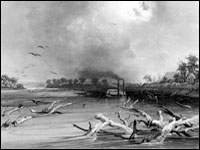Beatty Museum & Historical Society [NV]
The Beatty Museum and Historical Society is dedicated to preserving the historical heritage of the Bullfrog Mining District and Southern Nye County. The museum chronicles the history of the area, from its prehistoric origins through the Bullfrog gold rush.
The museum offers guided tours and exhibits of local history. The website offers visitor information, a history of the area, and online research resources.
